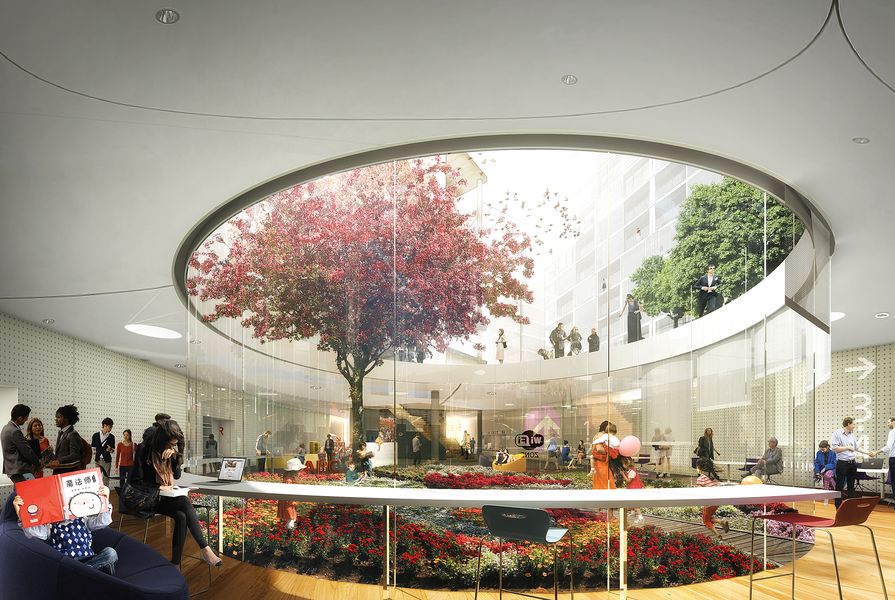As Sir Barnett Cocks of the United Kingdom’s House of Commons once said, “A committee is a cul-de-sac down which ideas are lured and then quietly strangled.”1 Committees, unsurprisingly, rarely deliver fine architecture – great buildings are more often the product of one or two strong players working assiduously towards a shared vision. The recent announcement of The Naomi Milgrom Foundation’s MPavilion for Melbourne is indicative of a new level of private support for architecture in the public realm, lead not by a committee, but by an individual with a strong and commendable vision.
At the announcement of the MPavilion project in July, the project’s initiator, Naomi Milgrom AO, clearly acknowledged that its inspiration derives from the Serpentine Pavilion in London, where, each northern summer, a world-famous architect is invited to design an inspired garden “folly”: a special, rather personal architectural statement realized with few constraints. An MPavilion will be constructed each spring from 2014 until 2017 in the Queen Victoria Gardens, located across the road from the National Gallery of Victoria. The pavilions, to be individually designed by a celebrated architect, will then be relocated elsewhere each summer and re-used for community purposes.
MPavilion’s advocate and patron Milgrom is a devotee of modern art and contemporary architecture. The corporate headquarters of the Sussan Group, of which Milgrom is owner and CEO, won a National Award for Commercial Architecture from the Australian Institute of Architects in 2009. Determined to achieve a great workplace and a significant architectural result, she examined the work of several talented designers before engaging the then relatively little-known firm of Durbach Block. The choice and the outcome were inspired, and introduced Durbach Block (now Durbach Block Jaggers) to larger-scale projects.

Patron Naomi Milgrom and architect Sean Godsell discuss the MPavilion project.
Image: Earl Carter
Milgrom has rapidly advanced her scheme for a new architecturally significant pavilion with financial support from the City of Melbourne, the Victorian State Government and the Australia Council, as well as various businesses and cultural and educational organizations. Given the limited time in which to realize the 2014 project by this October, Milgrom has invited well-known Melbourne architect Sean Godsell to design the first pavilion. This is the prerogative of a private patron.
In any business, the individual who has the majority holding in a venture has control over decision-making and outcomes. With truly public projects, there is a reasonable expectation for a fairer and more equitable appointment of designers and contractors. Here too, though, leadership and vision is crucial. Under Lord Mayor Clover Moore, the City of Sydney has shown itself to be an exemplary initiator of public projects, using tried and tested procedures that allow for public scrutiny and participation. Moore’s predecessor, Frank Sartor, put the City’s finances and administration in order, and Moore’s mayoralty since 2004 has humanized the Sydney CBD and the inner suburbs through highly considered civic improvements of excellent quality. New libraries and heated public swimming pools, upgraded theatres and public venues, and better pedestrian and bicycle access allied with comprehensive street landscaping have shown what can be achieved by a well-organized city administration under a leader with a clear vision.

Sean Godsell Architects’ proposal for the MPavilion project, due to open in Melbourne’s Queen Victoria Gardens in October 2014.
Image: Courtesy Sean Godsell Architects
The recent and current open competitions run by the City of Sydney for the design of the Green Square Library and Plaza and the nearby Aquatic Centre and Gunyama Park have brought new talent to the fore. Both competitions were thoughtfully organised by architect and independent competition advisor Stephen Varady. Their juries, composed of individuals with relevant design and practical skills, were chaired, respectively, by Melburnians John Denton and Carey Lyon. In both projects, young and relatively untried designers with a great concept are to be allied with experienced architectural practices to ensure the successful delivery of the winning scheme. These initiatives may well set a new benchmark for the realization of public architectural commissions in Australia.
The MPavilion, by contrast, is a private initiative. It is Milgrom’s generosity and vigour in pursuit of this program that will not only create a memorable pop-up structure, but also provide a public vehicle for exhibitions and talks on the built environment. Her intentions for architecture and for Melbourne are most worthy – whether or not it is she who decides the designer of future pavilions, we should not begrudge her the choice. Godsell, her first candidate, is an eminent architect bravely meeting a difficult deadline. With more time to resolve the subsequent pavilions, it will be interesting to see what other significant designs are considered by Milgrom and her MPavilion partners.


















